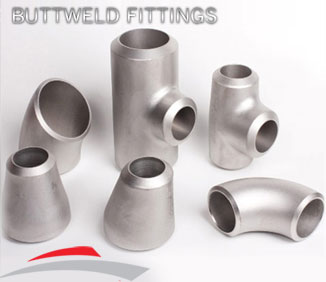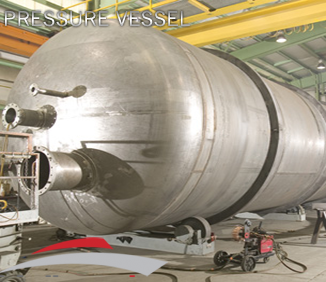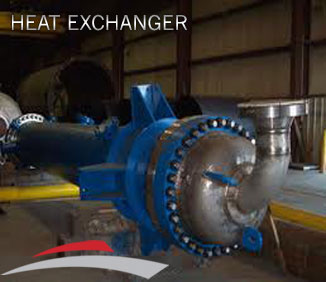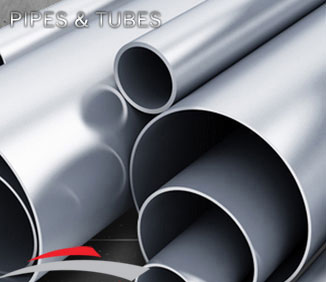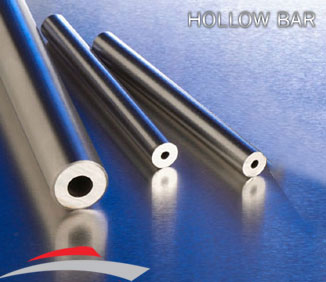Stainless steel plate is often referred to as "corrosion-resistant steel" – it does not stain, corrode or rust as easily as normal carbon steel. It would however be misleading to say it is corrosion-proof. It differs significantly from standard carbon steel due to the amount of chromium present, which limits surface corrosion unlike carbon steel which will rust when exposed to air and any moisture in the atmosphere. Due to its anti-oxidation qualities, stainless steel is often a popular solution.
Where low maintenance and corrosion resistance is required, stainless steel plates are a natural choice and are used in a diverse range of applications from modern architecture for cladding or fascias, to the food hygiene industry due to its anti-bacterial qualities. Hallmark Metallica supplies stainless steel in a wide variety of grades and aesthetic finishes. There are many options available - for example adding carbon during the forming process will make the stainless steel more durable and stronger too.
Example Industrial Uses:
- Chemical and fuel tankers
- Chemical and petrochemical plants
- Food processing and pharmaceutical industries where clean environments are required
- Construction, modern architecture
As a major stainless steel supplier, Hallmark Metallica & Alloys supply services include...
- major stockholding
- global shipping
- variety of finishes available
- heat resistant qualities when specified
- quick turnaround
- accurate 'in-house' cutting and profiling service
- high quality steel from major European steel mills
Seamless Pipe, ERW Pipe, EFW Pipe, DSAW Pipe and Forged Pipe
Sizes (Seamless): 1/2” NB - 24” NB
Sizes (ERW): 1/2” NB - 24” NB
Sizes (EFW): 6” NB - 100” NB
Wall Thickness available: Schedule 5S - Schedule XXS (heavier on request)
Specifications: ASTM A269 / ASTM A312
Material Grades :
| Stainless Steel Seamless Pipe |
ASTM A312 TP304/L/H, 310/H, 316/L/H/Ti, 321/H, 347/H, 410, 904L |
| Stainless Steel Welded Pipe |
ASTM A312 TP304/L/H, 310/H, 316/L/H/Ti, 321/H, 347/H, 904L |
| Stainless Steel Seamless Tube |
ASTM A213 TP304/L/H, 310/H, 316/L/H/Ti, 321/H, 347/H, 904L |
| Stainless Steel Seamless Tube |
ASTM A269 TP304/L/H, 310/H, 316/L/H/Ti, 321/H, 347/H, 904L |
| Stainless Steel Welded Tube |
ASTM A249 TP304/L/H, 310/H, 316/L/H/Ti, 321/H, 347/H, 904L |
| Stainless Steel EFW Tube |
ASTM A358 CL. 1 to 5 TP304/L/H, 310/H, 316/L/H/Ti, 321/H, 347/H, |
| Stainless Steel Fabricated pipe welded from plates |
Fabricate form S.S. Plates as per ASTM A240 TP304/L/H, 310/H, 316/L/H/Ti, 321/H, 347/H, 904L with or without 10% Radiographic Welding. |
Other Materials Testing :
NACE MR0175, H2 SERVICE, OXYGEN SERVICE, CRYO SERVICE, etc.
Stainless Steel Properties
High oxidation-resistance in air at ambient temperature is normally achieved with additions of a minimum of 13% (by weight) chromium, and up to 26% is used for harsh environments.[10] The chromium forms a passivation layer of chromium(III) oxide (Cr2O3) when exposed to oxygen. The layer is too thin to be visible, and the metal remains lustrous. The layer is impervious to water and air, protecting the metal beneath. Also, this layer quickly reforms when the surface is scratched. This phenomenon is called passivation and is seen in other metals, such as aluminium and titanium. Corrosion-resistance can be adversely affected if the component is used in a non-oxygenated environment, a typical example being underwater keel bolts buried in timber.
When stainless steel parts such as nuts and bolts are forced together, the oxide layer can be scraped off, causing the parts to weld together. When disassembled, the welded material may be torn and pitted, an effect known as galling. This destructive galling can be best avoided by the use of dissimilar materials for the parts forced together, for example bronze and stainless steel, or even different types of stainless steels (martensitic against austenitic), when metal-to-metal wear is a concern. Nitronic alloys reduce the tendency to gall through selective alloying with manganese and nitrogen. In addition, threaded joints may be lubricated to prevent galling.
Stainless Steel Applications
Stainless steel’s resistance to corrosion and staining, low maintenance, relatively low cost, and familiar lustre make it an ideal material for many applications. There are over 150 grades of stainless steel, of which fifteen are most commonly used. The alloy is milled into coils, sheets, plates, bars, wire, and tubing to be used in cookware, cutlery, hardware, surgical instruments, major appliances, industrial equipment (for example, in sugar refineries) and as an automotive and aerospace structural alloy and construction material in large buildings. Storage tanks and tankers used to transport orange juice and other food are often made of stainless steel, due to its corrosion resistance and antibacterial properties. This also influences its use in commercial kitchens and food processing plants, as it can be steam-cleaned and sterilized and does not need paint or other surface finishes.
Stainless steel is used for jewellery and watches with 316L being the type commonly used for such applications. It can be re-finished by any jeweler and will not oxidize or turn black.
Some firearms incorporate stainless steel components as an alternative to blued or parkerized steel. Some handgun models, such as the Smith & Wesson Model 60 and the Colt M1911 pistol, can be made entirely from stainless steel. This gives a high-luster finish similar in appearance to nickel plating. Unlike plating, the finish is not subject to flaking, peeling, wear-off due to rubbing (as when repeatedly removed from a holster), or rust when scratched.
Some automotive manufacturers use stainless steel as decorative highlights in their vehicles.
Stainless Steel Recycling and reuse
Stainless steel is 100% recyclable. An average stainless steel object is composed of about 60% recycled material of which approximately 40% originates from end-of-life products and about 60% comes from manufacturing processes.
There is a secondary market that recycles usable scrap for many stainless steel markets. The product is mostly coil, sheet and blanks. This material is purchased at a less-than-prime price and sold to commercial quality stampers and sheet metal houses. The material may have scratches, pits and dents but is made to the current specifications.
Types of stainless steel
Pipes and fittings made of stainless steel.
There are different types of stainless steels: when nickel is added, for instance, the austenite structure of iron is stabilized. This crystal structure makes such steels virtually non-magnetic and less brittle at low temperatures. For greater hardness and strength, more carbon is added. With proper heat treatment, these steels are used for such things as razor blades, cutlery, and tools.
Significant quantities of manganese have been used in many stainless steel compositions. Manganese preserves an austenitic structure in the steel as does nickel, but at a lower cost.
Stainless steels are also classified by their crystalline structure:
Austenitic, or 300 series, stainless steels make up over 70% of total stainless steel production. They contain a maximum of 0.15% carbon, a minimum of 16% chromium and sufficient nickel and/or manganese to retain an austenitic structure at all temperatures from the cryogenic region to the melting point of the alloy. A typical composition of 18% chromium and 10% nickel, commonly known as 18/10 stainless, is often used in flatware. 18/0 and 18/8 are also available. Superaustenitic stainless steels, such as alloy AL-6XN and 254SMO, exhibit great resistance to chloride pitting and crevice corrosion due to high molybdenum content (>6%) and nitrogen additions, and the higher nickel content ensures better resistance to stress-corrosion cracking versus the 300 series. The higher alloy content of superaustenitic steels makes them more expensive. Other steels can offer similar performance at lower cost and are preferred in certain applications.[citation needed] Low-carbon versions, for example 316L or 304L, are used to avoid corrosion problems caused by welding. Grade 316LVM is preferred where biocompatibility is required (such as body implants and piercings).[15] The "L" means that the carbon content of the alloy is below 0.03%, which reduces the sensitization effect (precipitation of chromium carbides at grain boundaries) caused by the high temperatures involved in welding.
Ferritic stainless steels generally have better engineering properties than austenitic grades, but have reduced corrosion resistance, due to the lower chromium and nickel content. They are also usually less expensive. They contain between 10.5% and 27% chromium and very little nickel, if any, but some types can contain lead. Most compositions include molybdenum; some, aluminium or titanium. Common ferritic grades include 18Cr-2Mo, 26Cr-1Mo, 29Cr-4Mo, and 29Cr-4Mo-2Ni. These alloys can be degraded by the presence of σ chromium, an intermetallic phase which can precipitate upon welding.
Martensitic stainless steels are not as corrosion-resistant as the other two classes but are extremely strong and tough, as well as highly machinable, and can be hardened by heat treatment. Martensitic stainless steel contains chromium (12–14%), molybdenum (0.2–1%), nickel (less than 2%), and carbon (about 0.1–1%) (giving it more hardness but making the material a bit more brittle). It is quenched and magnetic.
Precipitation-hardening martensitic stainless steels have corrosion resistance comparable to austenitic varieties, but can be precipitation hardened to even higher strengths than the other martensitic grades. The most common, 17-4PH, uses about 17% chromium and 4% nickel. The Lockheed-Martin Joint Strike Fighter is the first aircraft to use a precipitation-hardenable stainless steel -Carpenter Custom 465—in its airframe.
Duplex stainless steels have a mixed microstructure of austenite and ferrite, the aim usually being to produce a 50/50 mix, although in commercial alloys the ratio may be 40/60. Duplex stainless steels have roughly twice the strength compared to austenitic stainless steels and also improved resistance to localized corrosion, particularly pitting, crevice corrosion and stress corrosion cracking. They are characterized by high chromium (19–32%) and molybdenum (up to 5%) and lower nickel contents than austenitic stainless steels. Duplex grades are characterized into groups based on their alloy content and corrosion resistance. Lean duplex refers to grades such as UNS S32101 (LDX 2101), S32304, and S32003. The standard duplex is 22% chromium with UNS S31803/S32205 known as 2205 being the most widely used. Super duplex is by definition a duplex stainless steel with a pitting corrosion equivalent (PRE) > 40, where PRE = %Cr + 3.3x(%Mo + 0.5x%W) + 16x%N. Usually super duplex grades have 25% chromium or more and some common examples are S32760 (Zeron 100), S32750 (2507) and S32550 (Ferralium), although not all Ferralium grades are super duplex grades. Hyper duplex refers to duplex grades with a PRE > 48 and at the moment only UNS S32707 and S33207 are available on the market. The properties of duplex stainless steels are achieved with an overall lower alloy content than similar-performing super-austenitic grades, making their use cost-effective for many applications.
Comparison of standardized Stainless Steels
EN-standard Steel no. k.h.s DIN |
EN-standard Steel name |
SAE grade |
UNS |
| |
|
440A |
S44002 |
| 1.4112 |
|
440B |
S44003 |
| 1.4125 |
|
440C |
S44004 |
| |
|
440F |
S44020 |
| 1.4016 |
X6Cr17 |
430 |
S43000 |
| 1.4408 |
G-X 6 CrNiMo 18-10 |
316 |
|
| 1.4512 |
X6CrTi12 |
409 |
S40900 |
| |
|
410 |
S41000 |
| 1.4310 |
X10CrNi18-8 |
301 |
S30100 |
| 1.4318 |
X2CrNiN18-7 |
301LN |
N/A |
| 1.4307 |
X2CrNi18-9 |
304L |
S30403 |
| 1.4306 |
X2CrNi19-11 |
304L |
S30403 |
| 1.4311 |
X2CrNiN18-10 |
304LN |
S30453 |
| 1.4301 |
X5CrNi18-10 |
304 |
S30400 |
| 1.4948 |
X6CrNi18-11 |
304H |
S30409 |
| 1.4303 |
X5CrNi18-12 |
305 |
S30500 |
| |
X5CrNi30-9 |
312 |
|
| 1.4541 |
X6CrNiTi18-10 |
321 |
S32100 |
| 1.4878 |
X12CrNiTi18-9 |
321H |
S32109 |
| 1.4404 |
X2CrNiMo17-12-2 |
316L |
S31603 |
| 1.4401 |
X5CrNiMo17-12-2 |
316 |
S31600 |
| 1.4406 |
X2CrNiMoN17-12-2 |
316LN |
S31653 |
| 1.4432 |
X2CrNiMo17-12-3 |
316L |
S31603 |
| 1.4435 |
X2CrNiMo18-14-3 |
316L |
S31603 |
| 1.4436 |
X3CrNiMo17-13-3 |
316 |
S31600 |
| 1.4571 |
X6CrNiMoTi17-12-2 |
316Ti |
S31635 |
| 1.4429 |
X2CrNiMoN17-13-3 |
316LN |
S31653 |
| 1.4438 |
X2CrNiMo18-15-4 |
317L |
S31703 |
| 1.4539 |
X1NiCrMoCu25-20-5 |
904L |
N08904 |
| 1.4547 |
X1CrNiMoCuN20-18-7 |
SMO/6MO |
S3125 |







